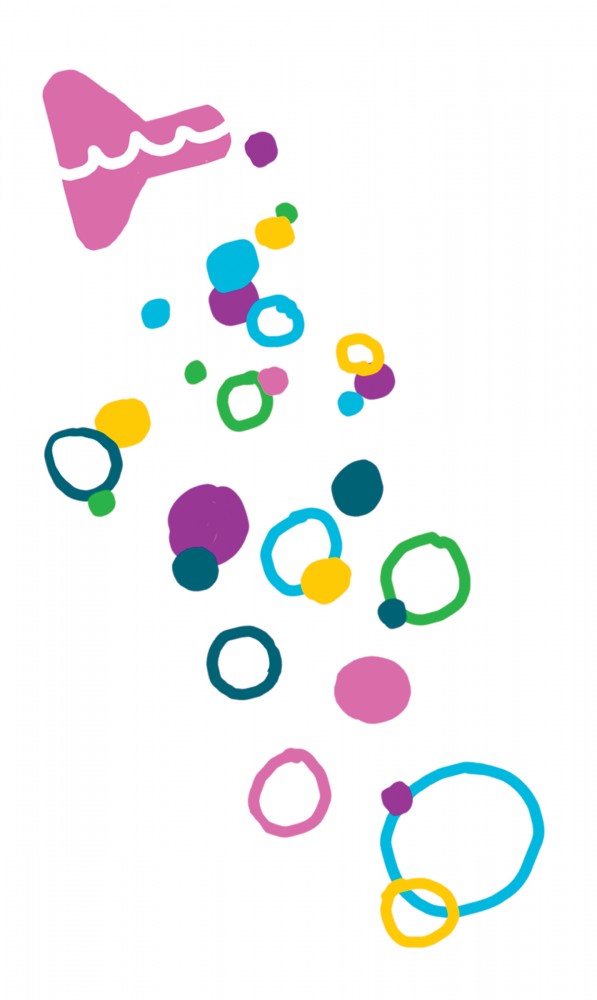Parker Schultz, Laura Bleeke, Jackie Leong, & Zach Praiss contributed to the reporting for this story.
Education has been compared to a pendulum, swinging between extremes. Teachers bemoan losses of autonomy in the classroom and pressures to quantify and measure, while national trends sway the pendulum towards assessment, data, and standardization on an industrial scale.
“Some wonder if the pendulum has swung too far, especially in as unique of a place as Clayton,†said CHS Academic Director and social studies teacher Josh Meyers.
No Child Left Behind (NCLB) was, in many ways, the impetus behind that swing. Signed into law in 2002, the education reform set national standards for America’s public school system. It tested students for standardized knowledge, and it held school districts accountable for the results. Since then, Clayton has been adjusting to meet the demands of NCLB and other national pressures.
“When I first got here we had huge curriculum binders that were all teacher-written,†said Sharmon Wilkinson, Superintendent of the School District of Clayton. “That started to change, particularly with No Child Left Behind.â€

Even at Clayton, a district that traditionally had taken national standards and assessments fairly lightly, changes have occurred.
“No Child Left Behind came along, and the stakes got higher,†said CHS Assistant Principal Marci Pieper. “Every child across needs to be proficient by 2013? It almost seemed like the task was set up for failure.â€
And Clayton has failed, at least by NCLB standards. For the past four years, the District has not met Adequate Yearly Progress (AYP), despite the fact that average scores on state tests are well above proficiency levels.
The system created by NCLB is undoubtedly imperfect, but it remains the law of the land in education.
“I don’t suppose Clayton has a choice,†said retired Captain teacher Lee Scissors. “It has to meet the national and state standards.â€
Now, 11 years after its enactment, changes are still taking place. Across the nation, schools are becoming more focused on assessment, more driven by data and alignment. Nationally, education has become an industry, dedicated to producing students with standard knowledge and experiences with scientific precision. Clayton is, sometimes unwillingly, following suit, and the industry of education continues to prosper.
Measurement
Testing, testing, testing. Assessment is emphasized in the industry of education, but prior to NCLB Clayton’s attitude towards state testing was “cavalier.â€
“Clayton didn’t pay as much attention to the tests,†said Wydown science teacher Claudia Wall. “It’s not like they weren’t trying to focus on success, but there wasn’t all this wailing and gnashing of teeth about it.â€
While standardized tests may seem superfluous in a district like Clayton, where students are renowned for their intellectualism and intelligence, NCLB has provided an important window into student performance. All districts, Clayton included, must now examine the proficiency of all students.
“In the past, you could say we were kind of cavalier, but we were looking at average scores,†said Assistant Superintendent for Teaching and Learning Dottie Barbeau. “You really can’t be so cavalier when you get these scores that show that 20 percent of your population is scoring much lower.â€
Due to state requirements that students make AYP, testing has become more prominent. Each subgroup – a group of more than 30 students, such as African-American or IEP students – must meet AYP in order for the District as a whole to do so.
Students are increasingly inundated with assessment. The list of standardized tests taken by Clayton students, a hodgepodge of acronyms, continues to grow.
Among these are the MAP, EOC, ERB, SRI, DRA2, Terra Nova, AIMS, NWEA, EXPLORE, PLAN and ACT. Students spend hours each year taking these tests. Fifth graders spend almost 14 hours in a year testing, as do eighth graders. High school students spend 17 hours taking standardized tests over their four years, not including AP tests, which typically last three hours each.
The data that all of this testing provides is dissected by administrators and teachers.
“These big summative assessments like MAP tests and the ACT test, those are like an autopsy,†Barbeau said. “It gives us a lot of information. An autopsy tells you about the effects of your life choices, maybe, or family genetic issues, the impact of your diet and medications. So the autopsy tells us a lot, but it doesn’t help the patient. So what we need are the annual check-ups, and that’s what our formative assessments and some of our common assessments are supposed to do.â€
Indeed, the District “asked that all teachers of like courses and grade levels give, at minimum, two assessments in common during each semester,†according to Barbeau.
A common assessment does not necessarily ask the same questions, but could instead test a skill. Teachers use their Professional Learning Community (PLC) time to collaborate in creating and examining common assessments.
“If you don’t have a common assessment that more than one classroom is using, how do you know if you’re hitting that mark or not?†Barbeau said. “You have to have a standard to compare to.â€
Numbers Game
From testing, the District gleans huge amounts of data. With the rapid improvement of technology in the past decades, districts can now process data with efficiency. Data Warehouse makes student data easily accessible to teachers.
“We have at our finger tips now much more sophisticated ways to measure what kids know,†Barbeau said. “We can more easily monitor the progress that students are making to see incremental learning gains.â€
In their PLCs, teachers of the same department or same class come together to compare student data and trends, and to converse about how student performance can be improved.
“I don’t want it to sound very cold and prescriptive, because it’s not,†Barbeau said. “It still is calling on the teacher to interpret that data and say, this data is telling me that these kids need something. And then we want the teachers to bring that breadth of knowledge they have and that innovation… and then you go back in your classrooms and try all of that. And then you come back together and see if it worked. Because if it’s not working, you need to go back and try something new. But if it is working, then we want you to share that with everybody else who might be teaching the same class.â€
Scores on tests are clearly a pride of the District, as shown by the massive posters in the Commons proclaiming Clayton’s ACT, AP, National Merit, and PISA scores. Yet some teachers worry that the focus on data can be overbearing, perhaps at a cost to other areas.
“I’ve heard a phrase that people use to talk about keeping in line with a test,†said English teacher Emily Grady. “You don’t fatten a pig by weighing it. Any time the focus is put on testing and numbers, it seems like you lose the instruction part.â€
Weighing the pig, as Grady puts it, is a nationwide trend. NCLB placed a premium on numbers, and the nations schools have been influenced.
“I think that not only here, but nationwide, people are becoming aware that education is data-driven,†said English teacher John Ryan. “I worry that means we are leveling downwards instead of holding a higher standard.â€
Many teachers spoken with for this article questioned to what degree students’ learning can be represented by data. While numbers can give teachers helpful insight into student’s academic progress, it may not paint the full picture. Some teachers worry that tests will only show one side of the progress made by their students.
“Data doesn’t take into account the human element of education – the magic moments that happen between a teacher and students in a classroom – that cannot be quantified,†said English teacher Susan Teson.
Social studies teacher Sam Harned, too, expressed doubt as to whether education could be quantified as NCLB and current educational trends suggest.
“The very best things that go on in a classroom cannot be measured, but people love to think that they can somehow measure education,†Harned said. “And maybe some things you can measure, but the best things you cannot.â€

English teacher Jennifer Sellenriek provided the example of a student being judged by his poor standardized test scores, when in reality the whole picture was more positive.
“Oh my gosh, this kid bombed the standardized test,†Sellenriek said. “And I say, ‘No, but every single day he asks a good question, he totally gets the big picture.’ We need to help him read for detail, that’s his problem. He’s not a failing student, he’s got one little glitch.â€
The push for data permeates education in Clayton. “Data is essential for making decisions for individuals and their academic achievement,†read a recent Captain Elementary email newsletter from Principal Sean Doherty. But the arts, in particular, are finding it difficult to measure skills based on data. Diana Haydon, a Glenridge Elementary School art teacher, has struggled to produce “evidence†of her student’s success.
“There is tremendous pressure for hard data of student performance,†Haydon said. “The arts do not easily translate into numbers that can be graphed and compared against standards. Paying attention to the arts requires tolerance for ambiguity.â€
In the end, the use of data forces teachers to become amateur statisticians, using graphs and numbers and charts to evaluate students and make instructional decisions.
“Trying to make this into a science is ultimately going to be a spirit-killing operation,†Harned said. “Nobody going into this field is going into it because they want to scientifically reduce education to data.â€
Lining Up
One of the District’s primary curricular goals over the past five years has been to vertically and horizontally align the curriculum. This was part of the five-year Comprehensive School Improvement Plan, drafted in 2008 by a committee of students, staff, parents and community members. For the purposes of this article, the focus will be on horizontal alignment: standardizing learning across grade levels.
The purpose of horizontal alignment, according to several administrators, is to develop certain “assured experiences,†so that there will be a standard that all students in a certain grade or class will achieve. The District, they said, needs to ensure that every sixth grader entering Wydown will have certain skills, and that every freshman will be at some level of proficiency.
“By having horizontally aligned curriculum, we have a shared understanding of the expectations and rigor we want for our students,†said Director of Assessment Heidi Shepard. “It allows for teachers to have thoughtful curriculum conversations as we constantly monitor our students’ successes and whether we are keeping the curriculum in alignment to state and college expectations.â€
Curriculum alignment is a national trend, and Missouri recently decided to adopt the Common Core State Standards (CCSS). A response to the poor and varied state assessment practices after No Child Left Behind, the CCSS are coordinated by the National Governors Association Center for Best Practices and the Council of Chief State School Officers. They have been adopted by 45 states thus far. The CCSS provide standards that will grant uniformity to the nation’s state assessments.
“It’s an expectation that kids across our country will be measured to a similar standard, and that way, as our society is more mobile, you have an expectation that you will be able to be successful no matter where you go, and that all states have a similarly challenging curriculum,†Barbeau said.
Since Clayton students will soon be tested over the material and skills in CCSS on Missouri state assessments, the District is in the process of incorporating the standards into the written curriculum. In many cases, this has already occurred. However, Barbeau said that the CCSS will serve as the “floor level expectation†as committees embed the guidelines into curriculum. She said that the CCSS tell teachers what to teach, not how to teach it, and she called the standards “very exciting.â€
“It is ratcheting up the expectations for learning, and that’s an exciting message for students…†Barbeau said. “Here in Clayton, we already have some highly ratcheted-up expectations, but even [the Common Core Standards], in some areas, will be pushing us to improve what we do.â€
Sellenriek was also enthusiastic about the new standards. She said that the CCSS, unlike older state standards, do a good job of incorporating intellectual curiosity and skills such as synthesizing information. Sellenriek said that she hopes the CCSS are, as Barbeau said, the minimum expectation.
“If we have this conversation the right way, it’s how does Common Core represent what we want, and what else can we do?†Sellenriek said. “If we have the right kind of conversation, Common Core can be the bare minimum, and we’re going to do more. And that’s the Clayton I’d like to be part of.â€
The drive for horizontal alignment is not uniformly accepted among teachers. To some, the desire to create a larger degree of uniformity in the classroom experience is puzzling.
“While I understand why parents want all students to meet the same objectives, one of my questions has been that I don’t quite understand why people want every child to have the exact same lessons and assessments in every classroom,†said English teacher James Lockhart. “Just because it’s different does not mean it’s less, it’s just different.â€
Nancy Freeman, who retired as journalism adviser last year, said that making kids have the same experience is “never going to be possible.â€
Several teachers expressed concern that standardizing curriculum would result in a loss of teacher independence.
“We’ve always cherished the autonomy of teachers… but now there are cases where curriculum is being dictated, and it has increased in the past decade, and it worries me,†Ryan said.
Meyers said that curriculum alignment has both pros and cons.
“By determining what you’re going to emphasize and what you’re not going to emphasize it’s liberating in a certain sense,†Meyers said. “I know that in a given unit I only have to teach these 10 to 20 concepts or events in depth. The flip side of that is that a teacher who has a particular interest or passion on a topic may feel compelled to spend less time on it or skip it altogether if it doesn’t fit within the identified framework.â€
While Clayton is not nearly as progressed in curriculum alignment as other districts, Harned said that he worries the trend of increasing standardization could, in the future, hamper teacher creativity.
“You’ve got to be careful that [alignment] doesn’t result in conformity, that it doesn’t result in a loss of teacher energy and initiative,†Harned said.
Curriculum alignment at the high school is not as entrenched as at the elementary schools. Teachers used to work to develop the elementary school curriculum, but that ended several years ago. Now, the District purchases ready-made curriculums – one teacher called them “teacher’s manuals†and said that in some cases “it’s word for word.â€

“It tells you exactly what to read, when to stop, and how many children should respond,†said one teacher who preferred to remain anonymous. “It’s a script. And there’s not a lot of flexibility, and not a whole lot of room to be creative for the teachers that want to be.â€
Curriculum is aligned across grade levels and all three elementary schools. Each subject has its own curriculum book, which includes activities, questions to ask students, and time allotments for lessons. At the end of each unit is a test, included in the “manual,†which each elementary school teacher of that grade level will give his or her students.
“I could go do my own thing and teach fractions my own way, but the bottom line is they have to take this test at the end, so why would I not go by the lesson provided, that’s been proven, all these people have studied this,†said another teacher who preferred to remain anonymous. “Why do I think I know more than the textbook people? So I’m just going to go by the text.â€
This approach to curriculum is, according to the teachers spoken with for this article, helpful for new, inexperienced teachers. But, they said, it is not necessary for teachers with decades of experience, and the end result is a loss of creativity.
“What hurts the most is that those creative things kids remember long after they have left school are gone,†one teacher said. “Kids aren’t going to remember reading a social studies textbook and answering questions about it. Sure they’ll learn from it, but it’s not going to bring a smile to their face when they remember learning it.â€
Barbeau said that she can sympathize with teachers’ concerns, but that fears of “cookie-cutter†teaching and complete loss of autonomy are “misdirected.†She said that “we need to teach this, we need to teach students how to divide two-digit fractions, but we can teach that however we want.â€
Wilkinson said that she thinks teachers are still able to be creative in the classroom.
“I think we still want teachers to be innovative and creative in their practice and delivery of the curriculum,†Wilkinson said. “We hired teachers for who they are, the passion for their subject area, and so we do want them to bring all that, and so you don’t want something to become so regimented that they feel they can’t. But I think there’s still that question of what’s the commonality of experiences that we want students to have, and what are the critical understandings that we want students to have?â€
As the District continues to align curriculum, those questions will likely be answered. And while one teacher said that having some constants across the District was a necessity, they said that controlling how teachers implement curriculum is not the best path.
“The way that teachers go about it is the art of it, and that’s the fun part of teaching,†one teacher said. “It’s not as fun as it used to be.â€
Industry
Testing, data usage and standardization are national trends, and Clayton is feeling the pressure to conform. But Clayton has long viewed itself as unique, as a regional leader. Now some worry that we are being forced to sacrifice that position.
“I think that we are having to become more like everybody else,†said business teacher Marci Boland. “I do see that we are not quite as unique as we used to be.â€
What made Clayton unique in the past was, according to former Assistant Superintendent Linda Henke, “the ability to innovate and try out new ideas. We had talented teachers and administrators who conducted research in their classrooms, wrote articles about their teaching, read widely, and helped to lead the district.â€
Freeman and others pointed out that Clayton is increasingly comparing itself to “market districts†or “comparable districts.†She said that 15 years ago “the thought that we were turning into just another Parkway or just another Rockwood would have been horrifying… We wanted to be the best. I think that people still want it, but they’re not always willing to do the things that that requires.â€

What exactly that requires may be the sticking point. Harned said that he believes Clayton is unique because of its inherently intellectual environment, and that the District needs to find its identity and work to maintain it.
“You’d better truly figure out what your identity as a school is going to be, and then preserve that identity at all costs,†Harned said. “ If you don’t guard it, it will get eroded. It’s not necessarily that you’re under assault, but if you don’t guard what you treasure as a school, then it could eventually erode.â€
It would be wrong to suggest that the changes in education of the past decade are caused only by NCLB. Economic downturn has caused districts around the nation to cut costs, and Clayton is now beginning to feel that pressure. Social studies teacher David Aiello said that he has seen a business-like mentality develop in District leadership, a sense that the “bottom line†is the most important factor in some decisions.
“If every decision must be based primarily on financial cost, then there should be no surprise when innovation and extra efforts by employees decline,†Aiello said. “Clayton School District employees have always given way more than they were paid for, and I don’t expect that to change. But I also believe that it gets more difficult for people to continue going above and beyond when they have to spend more and more time justifying every possible cost for any new idea that they want to try with students.â€
He described a time when the District was “so positive and full of optimism about the future,†a time when District leadership “instilled confidence in the employees and the community that Clayton was a truly special school district, and that we needed to keep the great things from our past but constantly innovate to find new ways to be a leader in public education.â€
Although Aiello admits that he may be reminiscing through rose-colored glasses, he said that he has a seen a “dramatic philosophical shift†in the way the District is run. Whereas in the past, visionary leadership heavily nurtured teacher innovation and creativity, he said that recent Boards of Education and administrations have been more akin to managers, focused on a financial bottom line and “afraid of making mistakes,†“to the detriment of programs and people who can keep us innovative.â€
Other teachers have perceived a sense of distrust between “management†and teachers, stemming from the push for data-driven decisions, common assessment, and curriculum alignment.
“My personal feeling is that there is much less trust now than there was 10 years ago,†said one teacher. “I personally think the Board has a lot to do with it. I think the Board is micromanaging and doing too much day-to-day functions of the District. It’s the Board’s job to set policy, and that’s it. And they’re trying to run the schools.â€
That lack of trust was apparent as we conducted interviews for this story. Several teachers asked to be anonymous, and many were wary of expressing their full opinion.
“[The District] used to value discourse and dissent from teachers and didn’t see it as a threat,†said an anonymous teacher. “They would see discourse as a way to really look forward and get the best ideas out there. Now, if you do that, you’ll get a job target – you’re essentially a threat to the system.â€
This system, this industry of education, is dynamic. It is a pendulum swaying between opposites: data and alignment on one side, and authentic assessment and complete teacher independence on the other. “I think it’s getting ready to be more balanced,†one teacher said.
But Lockhart was not so optimistic.
“I hope to find a middle ground, but that seems impossible in education,†Lockhart said. “We always swing widely from one extreme to another.â€






